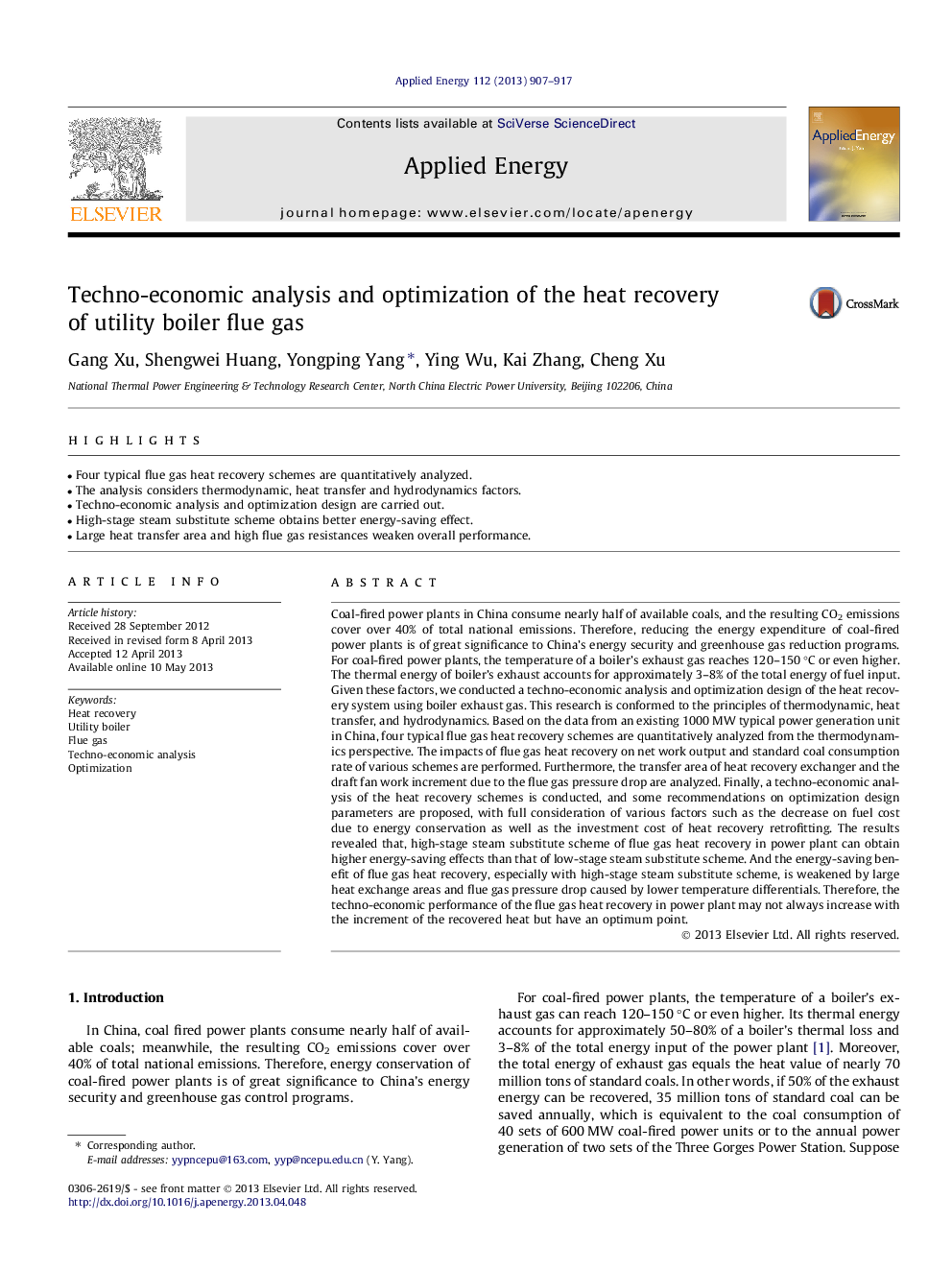| کد مقاله | کد نشریه | سال انتشار | مقاله انگلیسی | نسخه تمام متن |
|---|---|---|---|---|
| 242970 | 501913 | 2013 | 11 صفحه PDF | دانلود رایگان |

• Four typical flue gas heat recovery schemes are quantitatively analyzed.
• The analysis considers thermodynamic, heat transfer and hydrodynamics factors.
• Techno-economic analysis and optimization design are carried out.
• High-stage steam substitute scheme obtains better energy-saving effect.
• Large heat transfer area and high flue gas resistances weaken overall performance.
Coal-fired power plants in China consume nearly half of available coals, and the resulting CO2 emissions cover over 40% of total national emissions. Therefore, reducing the energy expenditure of coal-fired power plants is of great significance to China’s energy security and greenhouse gas reduction programs. For coal-fired power plants, the temperature of a boiler’s exhaust gas reaches 120–150 °C or even higher. The thermal energy of boiler’s exhaust accounts for approximately 3–8% of the total energy of fuel input. Given these factors, we conducted a techno-economic analysis and optimization design of the heat recovery system using boiler exhaust gas. This research is conformed to the principles of thermodynamic, heat transfer, and hydrodynamics. Based on the data from an existing 1000 MW typical power generation unit in China, four typical flue gas heat recovery schemes are quantitatively analyzed from the thermodynamics perspective. The impacts of flue gas heat recovery on net work output and standard coal consumption rate of various schemes are performed. Furthermore, the transfer area of heat recovery exchanger and the draft fan work increment due to the flue gas pressure drop are analyzed. Finally, a techno-economic analysis of the heat recovery schemes is conducted, and some recommendations on optimization design parameters are proposed, with full consideration of various factors such as the decrease on fuel cost due to energy conservation as well as the investment cost of heat recovery retrofitting. The results revealed that, high-stage steam substitute scheme of flue gas heat recovery in power plant can obtain higher energy-saving effects than that of low-stage steam substitute scheme. And the energy-saving benefit of flue gas heat recovery, especially with high-stage steam substitute scheme, is weakened by large heat exchange areas and flue gas pressure drop caused by lower temperature differentials. Therefore, the techno-economic performance of the flue gas heat recovery in power plant may not always increase with the increment of the recovered heat but have an optimum point.
Journal: Applied Energy - Volume 112, December 2013, Pages 907–917